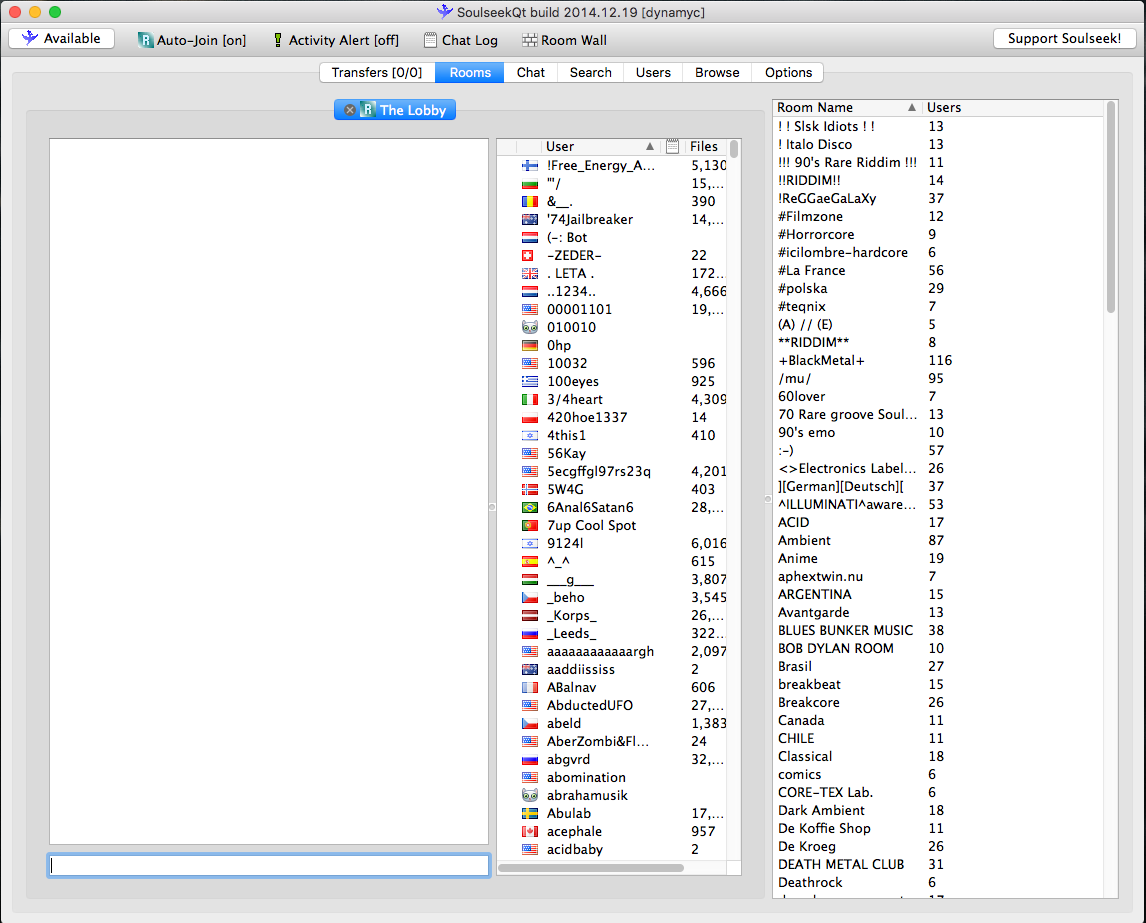

If rhs has a different variant field, the return value is determined by comparing the two variants. Returns true if lhs has the same variant field as rhs and is lexicographically not before rhs.

QDataStream & operator=(const QUuid & lhs, const QUuid & rhs) Returns a hash of the UUID uuid, using seed to seed the calculation. Related Non-Members uint qHash(const QUuid & uuid, uint seed = 0) If the other QUuid has a different variant field, the return value is determined by comparing the two variants. Returns true if this QUuid has the same variant field as the other QUuid and is lexicographically after the other QUuid. bool QUuid:: operator(const QUuid & other) const
#SOULSEEK NS VS QT WINDOWS#
Returns true if this UUID is not equal to the Windows GUID guid otherwise returns false. bool QUuid:: operator!=(const GUID & guid) const Returns true if this QUuid and the other QUuid are different otherwise returns false. bool QUuid:: operator!=(const QUuid & other) const Warning: This function is only for Windows platforms. From left to right, the five hex fields are obtained from the four public data members in QUuid as follows:

QUuid:: QUuid(const QByteArray & text)Ĭreates a QUuid object from the QByteArray text, which must be formatted as five hex fields separated by '-', e.g., "" where 'x' is a hex digit. If you create instances of QUuid using the constructor that accepts all the numeric values as parameters, use the following table to set the three most significant bits of parameter b1, which becomes QUuid::data4 and contains the variant field in its three most significant bits. It extracts the three most significant bits of byte 8 of the 16 bytes. Call variant() to discover which type of UUID an instance of QUuid contains. Each UUID contains a bit field that specifies which type (variant) of UUID it is. The acronym GUID is often used instead, Globally Unique IDentifiers, but it refers to the same thing.Īctually, the GUID is one variant of UUID. A UUID is a 16-byte (128-bit) number generated by some algorithm that is meant to guarantee that the UUID will be unique in the distributed computing environment where it is used. Using Universally Unique IDentifiers (UUID) is a standard way to uniquely identify entities in a distributed computing environment.


 0 kommentar(er)
0 kommentar(er)
